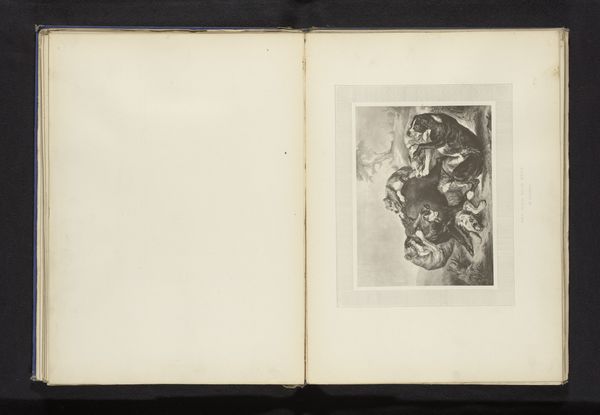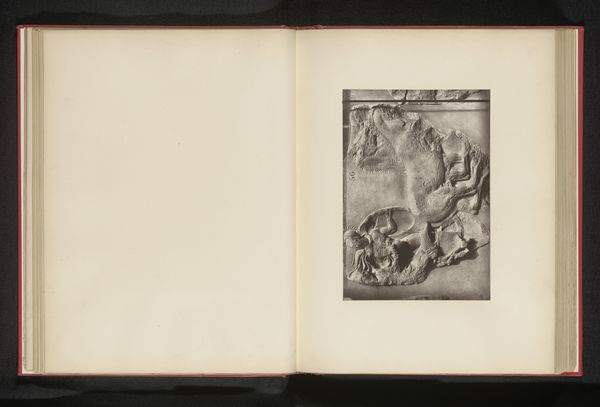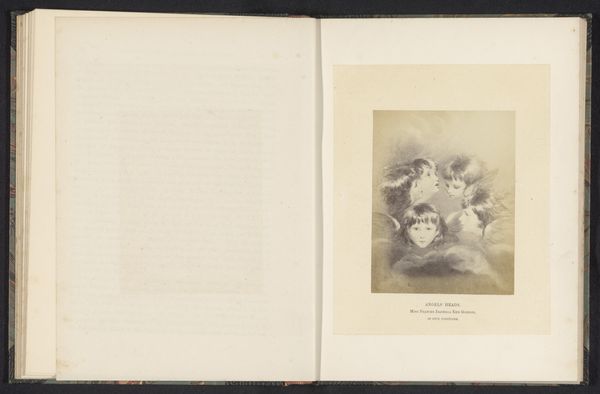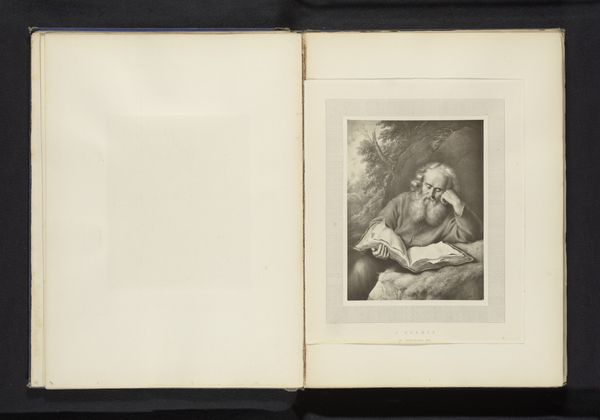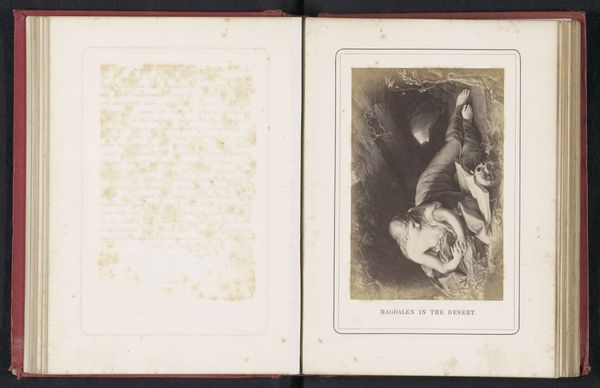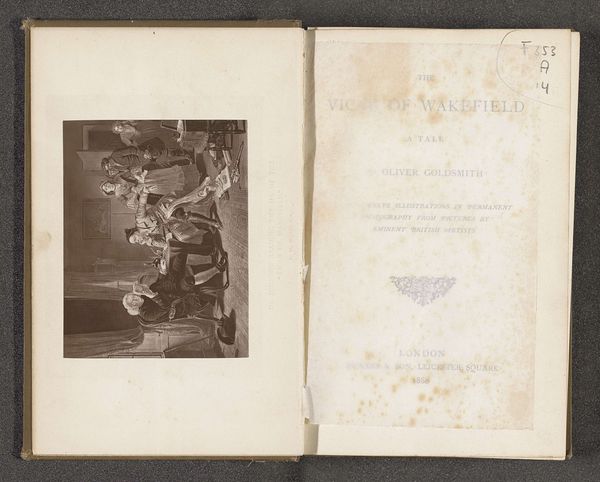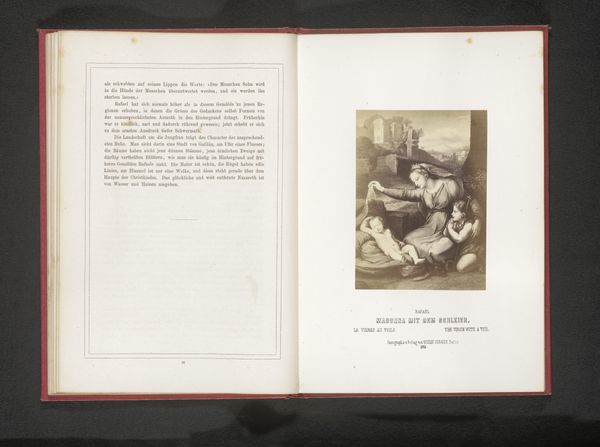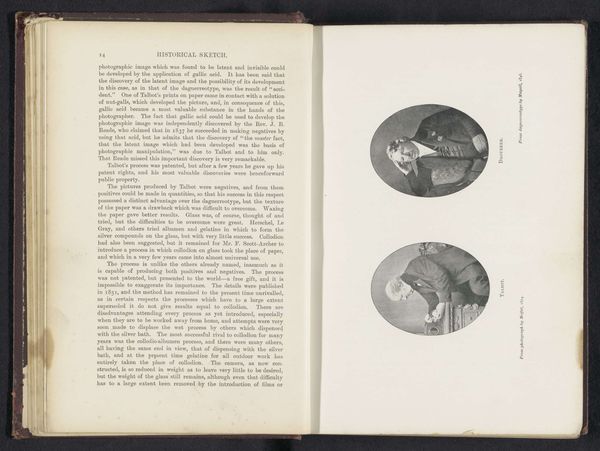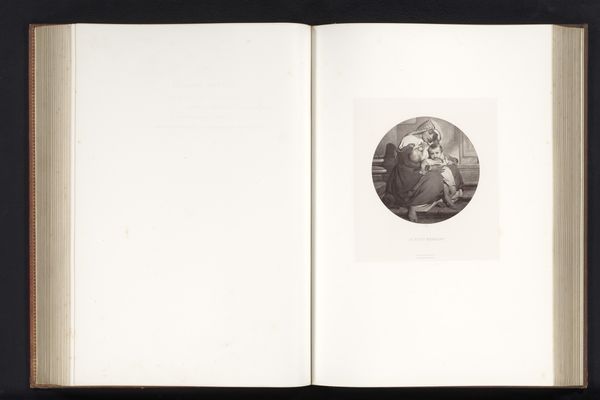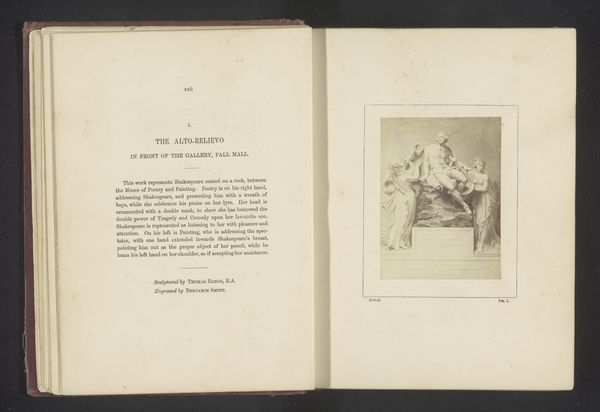
Fotoreproductie van een schilderij met de kruisafneming door Julius Rotermund before 1864
0:00
0:00
Dimensions: height 100 mm, width 116 mm
Copyright: Rijks Museum: Open Domain
Curator: What we're looking at here is a photographic reproduction of a painting of The Descent from the Cross by Julius Rotermund. The original likely predates this reproduction, which itself was created before 1864, and is attributed to Hanns Hanfstaengl. Editor: The high contrast immediately creates a dramatic tension. Note how the artist guides our eye—almost violently, one might say—through a descending diagonal line of grief. It’s masterful, really, despite being a reproduction. Curator: The image serves as a fascinating example of 19th-century art dissemination. Rotermund, a now lesser-known name, gained wider recognition through such photographic prints. These circulated, influencing artistic trends and shaping public taste. Editor: Observe how the chiaroscuro is employed here. The figures are lit with an almost theatrical flair, highlighting their sorrow. It directs our emotional response and certainly reinforces the intended piety of the image. The poses feel baroque. Curator: Baroque, exactly! One can assume that Rotermund aimed for that grandeur, tapping into familiar visual tropes to engage his audience. These photographs played a role in both preserving and democratizing access to such large-scale frescos, often only found within specific churches. Editor: Indeed. While the composition remains relatively unchanged from the original fresco—and we should take its present-day impact with some degree of caution given its mediated form—the black-and-white format enhances the sculptural quality of the figures. It emphasizes their weight and solidity, drawing you in. Curator: It also removes color. That subtraction makes me think of other engravings reproducing well-known color images during the period. So, the grayscale here transforms the work. What originally was probably meant as hyper-real, through the use of color, instead focuses the observer’s attention on form. Editor: A point well taken. Though this particular version is secondhand, viewing it makes you appreciate how image reproductions help determine what gets to matter in cultural memory and shapes how stories and messages resonate through art over time. Curator: Precisely. Examining how pieces were transmitted and viewed by varied groups exposes the intricacies behind aesthetic standards and how history is made. Editor: It all underscores the necessity to consider both what’s present and what's absent when deciphering its importance to culture.
Comments
No comments
Be the first to comment and join the conversation on the ultimate creative platform.

